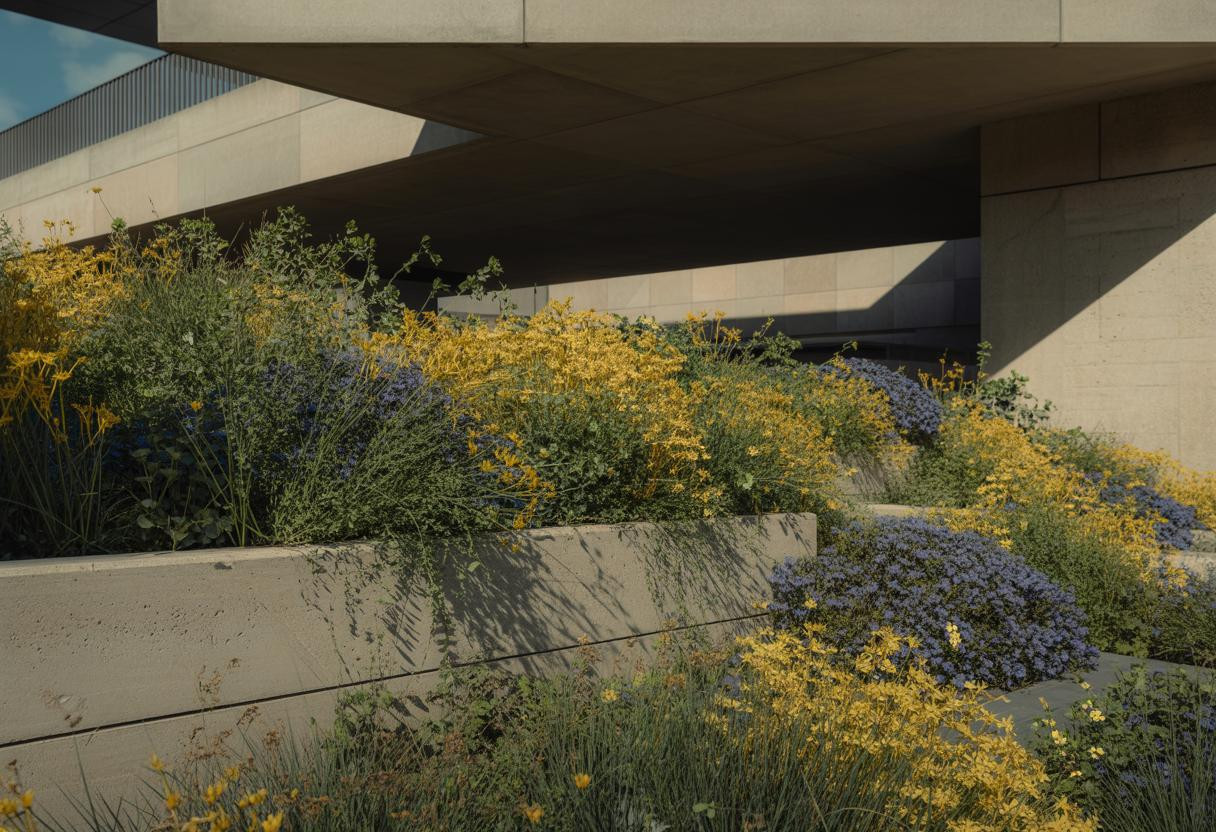The Chelsea Flower Show 2025 has unveiled revolutionary garden design strategies that challenge traditional landscaping approaches, with eco-brutalism and biochar integration leading a sustainability revolution that’s transforming how we think about outdoor spaces. These innovations aren’t just for show gardens—they’re practical solutions that everyday gardeners can implement to create stunning, environmentally conscious spaces that actually reduce maintenance while increasing visual impact.
The evolution of modern garden design philosophy
This year’s Chelsea showcase marked a dramatic departure from the muted, understated palettes that dominated previous decades. Yellow emerged as the standout color of 2025, strategically paired with deep purples and vibrant oranges to create emotionally charged garden spaces that psychologically elevate mood and energy levels.
The show’s emphasis on eco-brutalism—using hypertufa for angular, functional garden elements—represents a fundamental shift toward sustainable materials that serve dual purposes. These innovations mirror broader design trends where functionality and environmental responsibility intersect, much like how specific color choices can add thousands to property values while serving aesthetic purposes.
Traditional bedding plants are being replaced by self-seeding perennials and wildflower combinations that require 70% less maintenance while supporting local ecosystems. This shift reflects growing awareness among gardeners seeking beautiful spaces without constant upkeep demands.
Breakthrough sustainability techniques transforming home gardens
Carbon-capturing garden structures revolutionize outdoor spaces
Biochar integration emerged as a game-changing technique at Chelsea 2025, with charred oak planters capable of sequestering up to 500 kg of carbon dioxide for the planter’s entire lifespan. This isn’t just environmental theater—it’s practical carbon management that improves soil structure while reducing watering needs by up to 40%.
Crevice planting, featuring vertical stone divisions housing drought-tolerant species, maximizes growing space while creating dramatic visual impact. These alpine-inspired installations work particularly well in small urban gardens where every square foot counts.
Multi-functional design elements maximize small spaces
Multi-stem trees like Corylus avellana create layered canopies that allow more light penetration while providing structural interest in compact areas. This approach generates mini-woodland environments that support diverse plant communities without overwhelming small spaces.
Container gardening efficiency has been revolutionized through hypertufa planters that combine durability with environmental benefits. These structures support alpine species while creating striking architectural elements that anchor garden design.
Economic advantages of sustainable garden investments
The financial benefits of these Chelsea-inspired techniques extend far beyond initial implementation costs. Wildflower bedding reduces annual plant replacement expenses by up to 60%, while biochar-enhanced soils dramatically decrease fertilizer and watering requirements.
Smart garden investments often qualify for environmental incentives, similar to how strategic home improvements can generate significant annual savings while qualifying for substantial tax credits. The long-term maintenance reduction from sustainable practices creates compounding financial benefits over time.
This shift toward low-maintenance, high-impact gardening reflects broader lifestyle changes where people seek beautiful results without overwhelming time commitments, paralleling trends in other areas where efficiency and sustainability intersect.
Practical implementation strategies for any garden size
Color psychology techniques for maximum impact
Implement the Chelsea 2025 color formula by combining yellow primula with purple iris and orange accents to create emotionally uplifting spaces. This strategic color placement triggers psychological responses that enhance mood and energy levels in outdoor environments.
Vertical integration for small spaces
Layer plantings using the forest margin approach: multi-stem trees provide dappled shade for understory ferns and hostas, creating complex ecosystems in minimal square footage. This technique maximizes biodiversity while minimizing maintenance requirements.
Water-wise plant selection matrix
Choose plants based on microclimate compatibility: drought-tolerant poppies and Epimedium for dry areas, moisture-loving Siberian irises for transitional zones. This strategic selection reduces watering needs while ensuring thriving plant communities.
Transforming your outdoor space with proven techniques
The Chelsea Flower Show 2025 innovations prove that sustainable gardening doesn’t require sacrificing beauty or sophistication. By implementing eco-brutalist structures, strategic color combinations, and carbon-capturing techniques, home gardeners can create spaces that rival professional designs while contributing to environmental health. These approaches represent the future of residential landscaping—where environmental responsibility and stunning aesthetics work together seamlessly.
